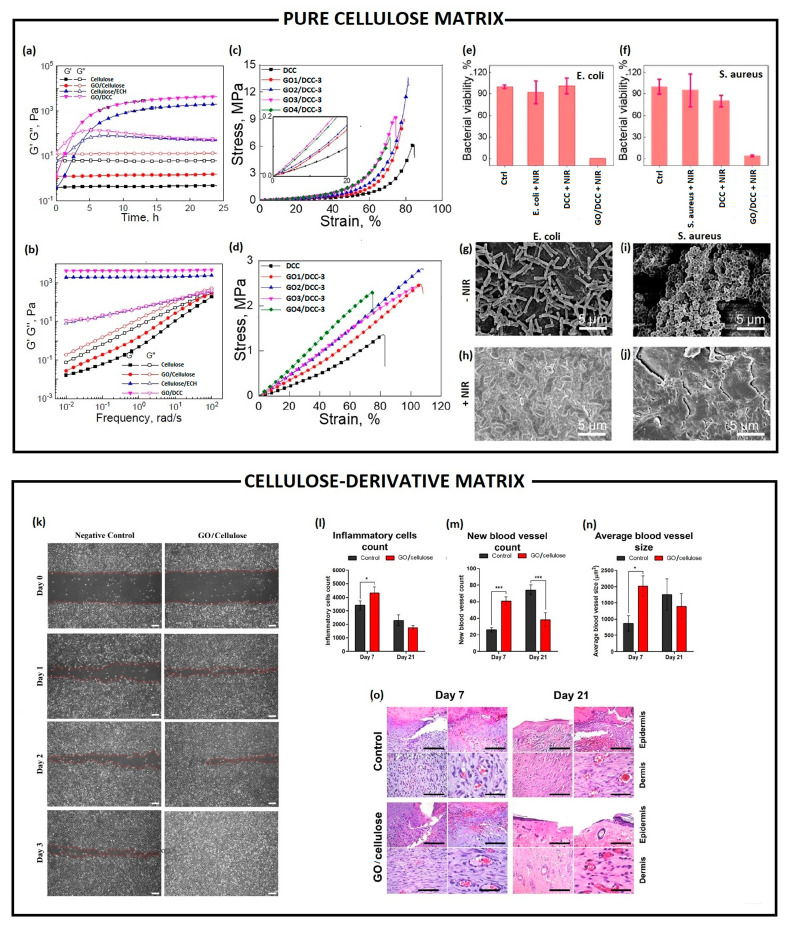Figure 6.
Pure cellulose matrix (top): rheological characterizations: (a) time- and (b) frequency-dependence of the storage modulus (G′) and loss modulus (G″) of a cellulose, cellulose/GO (2 wt%), cellulose/ECH (ECH:DCC molar ratio = 0.86), and cellulose/GO (2 wt%)/ECH (ECH:AGU molar ratio = 0.86). Mechanical characterizations: (c) compression strain–stress curves and (d) tensile strain–stress curves of cellulose/GO/ECH composite hydrogels with different GO contents. The insets show magnified plots of the responses in the low-strain range. Antimicrobial studies: relative percentage survival of (e) E. coli and (f) S. aureus after incubation with composite hydrogels with and without GO under NIR laser irradiation (power density of 2 W/cm2 under 808 nm). SEM micrographs of E. coli (g,h) and S. aureu (i,j) on DCC4-3 before (g,i) and after (h,j) NIR irradiation. Adapted from [127]. Copyright (2022), with permission from Elsevier. Cellulose-derivatives matrix (bottom): (k) evaluation of GO-cellulose nanocomposite effect on in vitro wound healing through scratch assay performed by using a human endothelial cell line (EA.hy926) after 0, 1, 2 and 3 days post wound induction. Red-dotted lines indicate the wound edge (scale bar = 200 µm); (l) inflammatory cells counts, (m) new blood vessels counts, and (n) average blood vessels size measured through ImageJ from a histological section of skin wound in rats treated with or without GO-cellulose nanocomposite for 7 and 21 days. Differences were evaluated using one-way ANOVA (* p < 0.05; *** p < 0.0001); (o) haematoxylin and eosin staining of a histological section of skin wound in rats non-treated (control) and treated with GO-cellulose for 7 and 21 days post-wound induction (scale bar = 50 µm). Reprinted from [129]. Copyright (2022), with permission from Elsevier.

